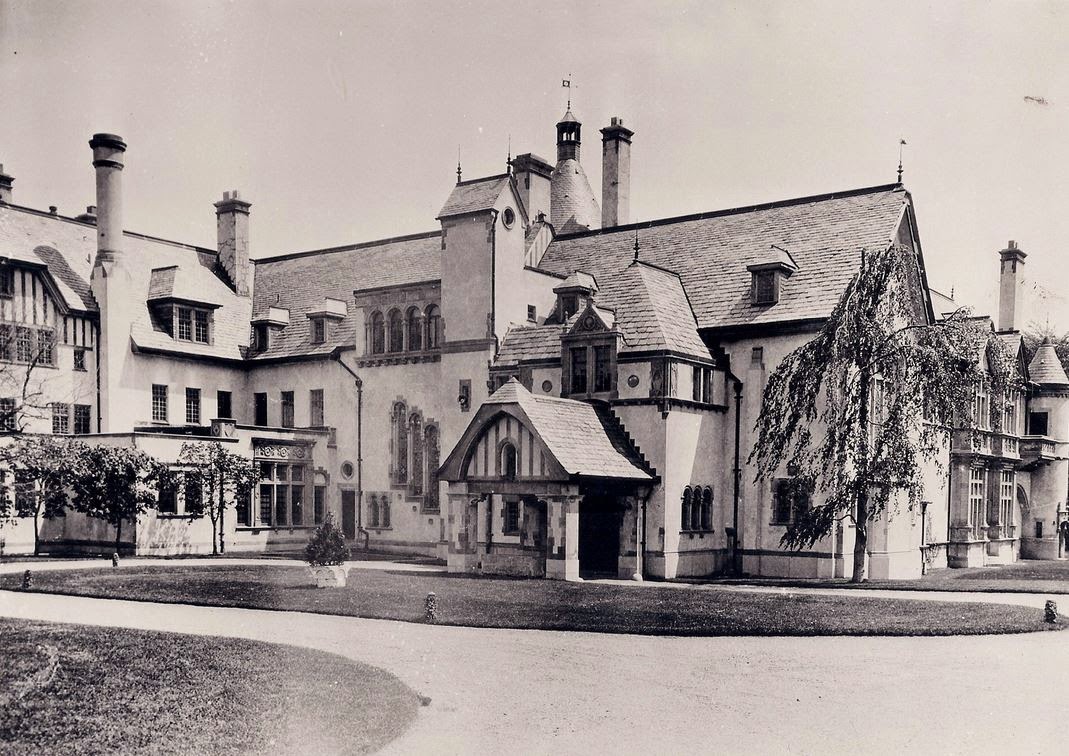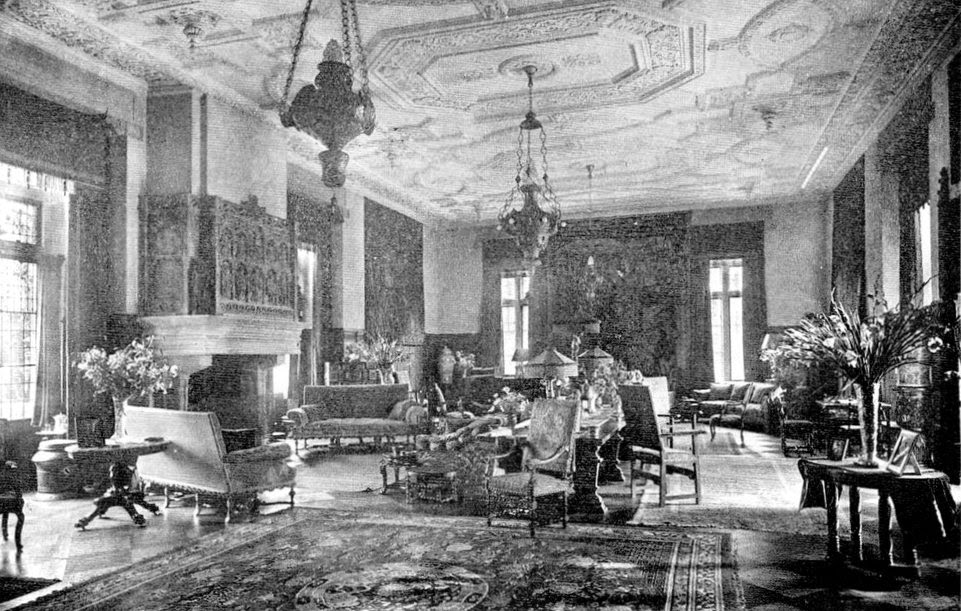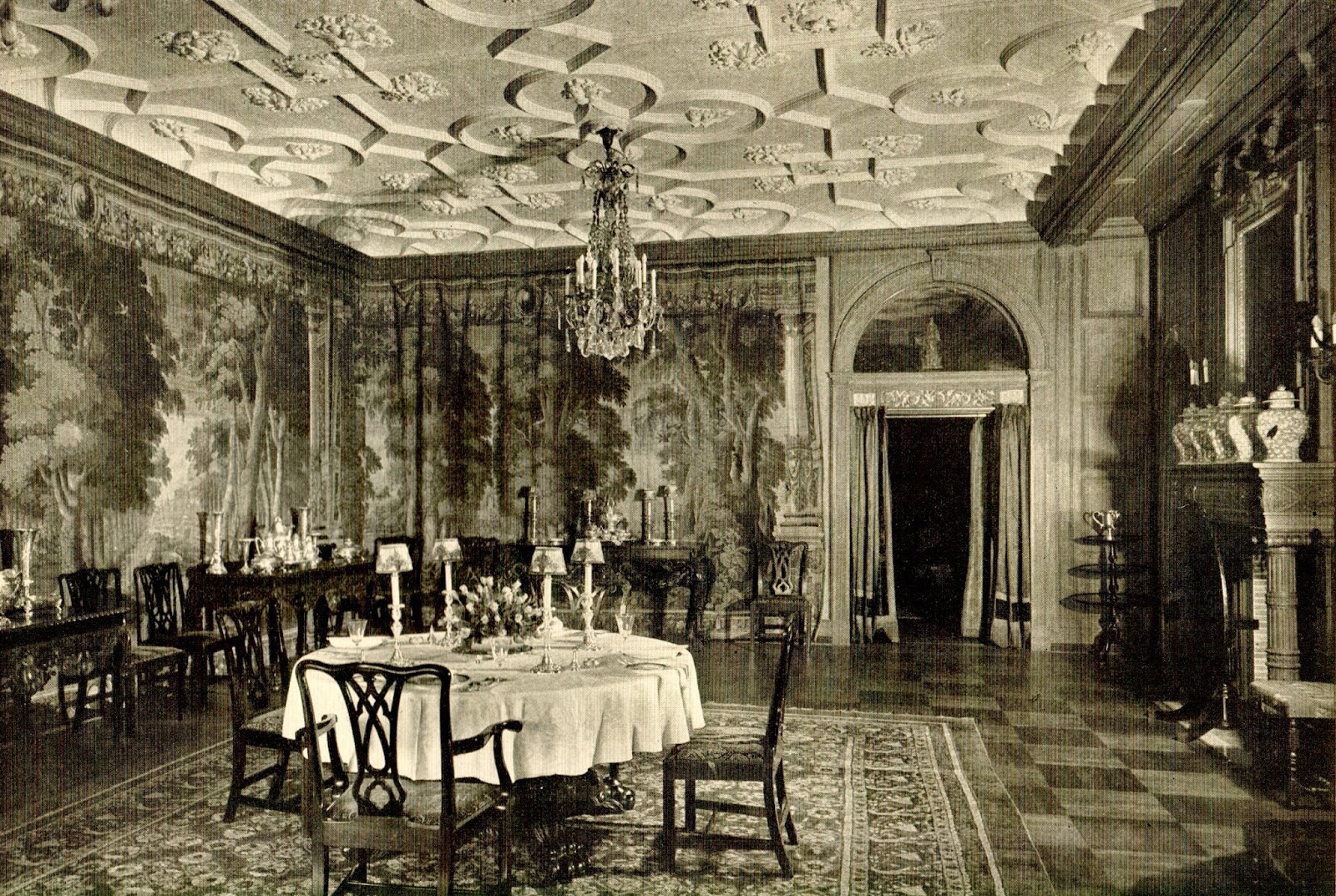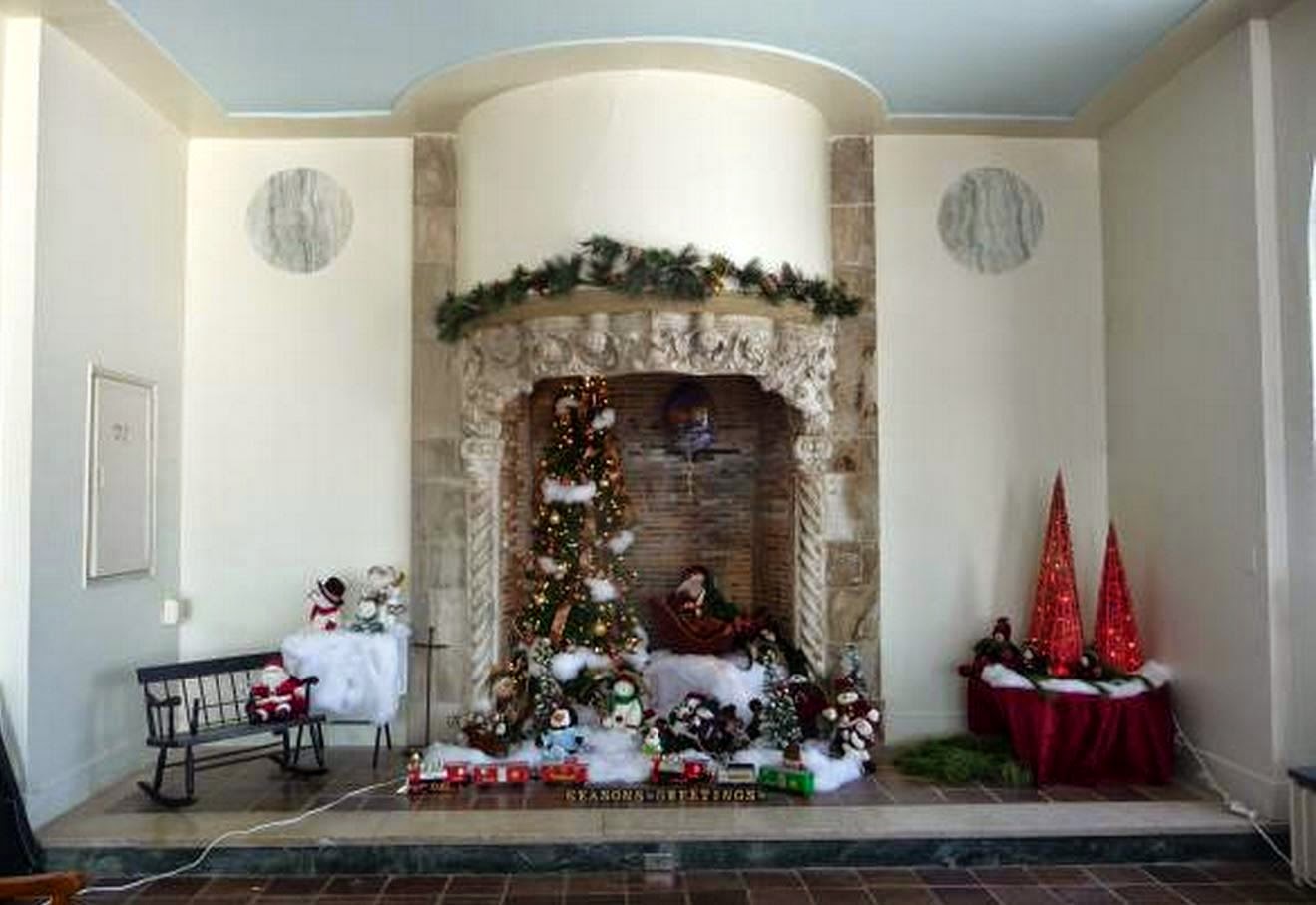 |
| Legendary Estates of Beverly Hills |
'La Collina' is one of those skillfully designed estates that represented those turning points. The national architectural press and Los Angeles media applauded 'La Collina' upon its 1924 completion. Flattering articles praised its owner, banker Benjamin R. Meyer, young architect Gordon B. Kaufmann, and landscape architect Paul G. Thiene for their vision."
 |
| Houses of Los Angeles Volume 2 |
Los Angeles Times - May 27, 1923 "A year will be required to finish the house which Ben R. Meyer, president of the Union Bank and Trust Company, is building in Beverly Hills - To insure a magnificent setting for his new home, Mr. Meyer purchased several acres of ground before he started work on the house."
They lived at their estate well cared for by a butler, two cooks, two maids, a masseur, three groomsmen, and three gardeners. Through his wife, Rachel Cohn Meyer (1872-1970), Meyer became a member of Los Angeles Jewish community and was responsible for many of the city's successful early philanthropies. He and his wife had no children. Rachel Meyers father, Kaspare Cohn (1839-1916) founded the Kaspare Cohn Commercial & Savings Bank, which became Union Bank & Trust Company after Meyer, as president assumed control shortly before Cohn's death. Similarly, Kaspare Cohn founded and financed the Kaspare Cohn Hospital, of which Meyer was an officer of the board. It became the Cedars-Sinai Medical Center.
 |
PLOT PLAN
Estate of Benjamin R. Meyer, Beverly Hills
Johnson, Kaufmann & Coate, Architects
Paul G. Thiene, Landscape Architect
|
 |
Estate of Benjamin R. Meyer, Beverly Hills
Johnson, Kaufmann & Coate, Architects
Paul G. Thiene, Landscape Architect
|
 |
Estate of Benjamin R. Meyer, Beverly Hills
Johnson, Kaufmann & Coate, Architects
Paul G. Thiene, Landscape Architect
|
The leveling of the building site left a bank on the uphill side of approximately 30 feet. Three terraces with steps, walks, pergolas and planting made a very effective background for a site for the house and changed the unsightly hillside into a spot of beauty.
 |
GATEHOUSE
Estate of Benjamin R. Meyer, Beverly Hills
Johnson, Kaufmann & Coate, Architects
Paul G. Thiene, Landscape Architect
|
 |
| APPROACH
Estate of Benjamin R. Meyer, Beverly Hills
Johnson, Kaufmann & Coate, Architects
Paul G. Thiene, Landscape Architect
|
 |
| APPROACH Estate of Benjamin R. Meyer, Beverly Hills
Johnson, Kaufmann & Coate, Architects
Paul G. Thiene, Landscape Architect
|
 |
Estate of Benjamin R. Meyer, Beverly Hills
Johnson, Kaufmann & Coate, Architects
Paul G. Thiene, Landscape Architect
|
 |
FORE COURT
Estate of Benjamin R. Meyer, Beverly Hills
Johnson, Kaufmann & Coate, Architects
Paul G. Thiene, Landscape Architect
|
 |
Estate of Benjamin R. Meyer, Beverly Hills
Johnson, Kaufmann & Coate, Architects
Paul G. Thiene, Landscape Architect
|
 |
Estate of Benjamin R. Meyer, Beverly Hills
Johnson, Kaufmann & Coate, Architects
Paul G. Thiene, Landscape Architect
|
 |
FIRST FLOOR PLAN
Estate of Benjamin R. Meyer, Beverly Hills
Johnson, Kaufmann & Coate, Architects
|
 |
HALL
Estate of Benjamin R. Meyer, Beverly Hills
Johnson, Kaufmann & Coate, Architects
|
 |
STAIR HALL
Estate of Benjamin R. Meyer, Beverly Hills
Johnson, Kaufmann & Coate, Architects
|
 |
HALL STAIRWAY
Estate of Benjamin R. Meyer, Beverly Hills
Johnson, Kaufmann & Coate, Architects
|
 |
LIVING ROOM ENTRANCE
Estate of Benjamin R. Meyer, Beverly Hills
Johnson, Kaufmann & Coate, Architects
|
Unlike William Randolph Hearst, who had looted Europe for Spanish and Italian bell towers, ironwork, and doorways, Ben Meyer insisted that "only materials manufactured in California or native to the Southland be used." Los Angeles Times - May 27, 1923
 |
LIVING ROOM
Estate of Benjamin R. Meyer, Beverly Hills
Johnson, Kaufmann & Coate, Architects
|
 |
BREAKFAST ROOM
Estate of Benjamin R. Meyer, Beverly Hills
Johnson, Kaufmann & Coate, Architects
|
 |
DINING ROOM
Estate of Benjamin R. Meyer, Beverly Hills
Johnson, Kaufmann & Coate, Architects
|
 |
LIBRARY
Estate of Benjamin R. Meyer, Beverly Hills
Johnson, Kaufmann & Coate, Architects
|
 |
CORNER of LIBRARY
Estate of Benjamin R. Meyer, Beverly Hills
Johnson, Kaufmann & Coate, Architects
|
 |
| "ROAD OVER HILL" Estate of Benjamin R. Meyer, Beverly Hills Dedrick Brandes Stuber (1878-1954) |
 |
SECOND FLOOR PLAN
Estate of Benjamin R. Meyer, Beverly Hills
Johnson, Kaufmann & Coate, Architects
|
 |
Estate of Benjamin R. Meyer, Beverly Hills
Johnson, Kaufmann & Coate, Architects
Paul G. Thiene, Landscape Architect
|
 |
Estate of Benjamin R. Meyer, Beverly Hills
Johnson, Kaufmann & Coate, Architects
Paul G. Thiene, Landscape Architect
|
 |
Estate of Benjamin R. Meyer, Beverly Hills
Johnson, Kaufmann & Coate, Architects
Paul G. Thiene, Landscape Architect
|
 |
GARDEN POOL AND HOUSE
Estate of Benjamin R. Meyer, Beverly Hills
Johnson, Kaufmann & Coate, Architects
Paul G. Thiene, Landscape Architect
|
 |
| GARDEN POOL AND HOUSE Estate of Benjamin R. Meyer, Beverly Hills Johnson, Kaufmann & Coate, Architects Paul G. Thiene, Landscape Architect |
 |
Estate of Benjamin R. Meyer, Beverly Hills
Johnson, Kaufmann & Coate, Architects
Paul G. Thiene, Landscape Architect
|
 |
CASINO
Estate of Benjamin R. Meyer, Beverly Hills
Johnson, Kaufmann & Coate, Architects
Paul G. Thiene, Landscape Architect
|
 |
POOL
Estate of Benjamin R. Meyer, Beverly Hills
Johnson, Kaufmann & Coate, Architects
Paul G. Thiene, Landscape Architect
|
 |
ROSE GARDEN
Estate of Benjamin R. Meyer, Beverly Hills
Johnson, Kaufmann & Coate, Architects
Paul G. Thiene, Landscape Architect
|
 |
ROSE GARDEN
Estate of Benjamin R. Meyer, Beverly Hills
Johnson, Kaufmann & Coate, Architects
Paul G. Thiene, Landscape Architect
|
 |
STABLES
Estate of Benjamin R. Meyer, Beverly Hills
Johnson, Kaufmann & Coate, Architects
|
The garages are conveniently located behind the hill near the house. The garage court walls will be slightly concealed by planting from the main drive and this cope will afford an interesting spot of architecture.
 |
RIDING RING
Estate of Benjamin R. Meyer, Beverly Hills
Johnson, Kaufmann & Coate, Architects
|
 |
| Winston Churchill, Ben R. Meyer, Captain Monte Foster and a Marlin swordfish caught by Winston Churchill, taken at Catalina Island, 1929 SOURCE |
In 1941 they sold the estate to a investment group. In subsequent decades, the estate was subdivided into building lots for smaller homes. The long driveway became a new street. Although much altered, "La Collinas" main house, featured in the TV series Entourage, and gatehouse remain today as independent private residences. Last sold: June 2004 for $9,690,096.
wikimapia LOCATION. Bing Maps VIEW.








































































































